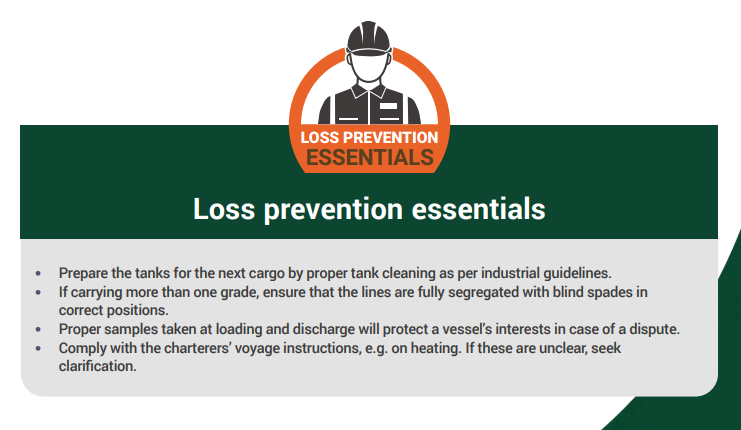The Swedish Club recently launched a cargo advice guide, focusing on petroleum cargoes shipments.
According to the Swedish Club:
This month, we wish to highlight the petroleum cargo advice. A variety of refined petroleum cargoes are transported via the shipping industry. These cargoes are classified by the hydrocarbon range of the products.
As the club explains, a common contamination found in refined petroleum products is the presence of particulates. This often leads to a failure in the appearance parameter which states that the cargo should be ‘clear and bright’ and typically leads to further cargo processing operations.
Pre-loading
The ‘HM 50 Guidelines for the cleaning of tanks and lines for marine tank vessels carrying petroleum and refined products’, published by the Energy Institute provides tank cleaning guidelines for switching between various dirty and clean/refined petroleum product grades.
Particulates: A common contamination found in refined petroleum products is the presence of particulates. This often leads to a failure in the appearance parameter which states that the cargo should be ‘clear and bright’ and typically leads to further cargo processing operations. Pre-loading considerations should therefore include the state of the tank coatings, with scale being regularly lifted and tank coatings repaired. Attention to the state of the previous cargo should be paid, as indications of sediment or dark colouring in previous cargoes may indicate a breakdown in the tank coating and could affect the subsequent cargo to be loaded. Maintaining the coatings of the cargo tanks can go towards eliminating the vessel as a potential source of particulate contamination.
Tank atmosphere: Attention should also be paid to the tank atmosphere prior to loading. When loading certain grades of petroleum products, such as gasoil which is sensitive to flash point contamination, it should be ensured that the tank atmosphere is purged to below 2% hydrocarbons by volume to prevent contamination of the next cargo.
Segregation: If the vessel is to carry multiple grades of petroleum cargoes, then the vessel should have fully segregated lines with all valves and blind spades in the correct positions. Inert gas (IG) lines should also be segregated. This is to prevent liquid contamination during loading and discharge operations, as well as vapour contamination during laden voyage.
During loading
Manifold, first foot and after-loading samples should be drawn during the loading of the cargo. Some terminals do not allow manifold samples to be drawn therefore the rules and regulations of each terminal should be followed.
Samples during the stages of loading allow for potential contamination issues to be caught early on and thoroughly investigated, possibly preventing or reducing contamination of the bulk cargo.
During voyage
With petroleum cargoes there are no specific carriage instructions as the products are fairly stable. Low flash point products are to be carried under IG as per SOLAS requirements. The refined petroleum product grades do not usually require heating during voyage. Heavier grades such as fuel oil, bitumen and some base oil cargoes often require special voyage instructions, such as heating and recirculation.
During discharge
At the discharge port, before-discharge samples should be drawn as individual tank samples, either as running or upper, middle and lower level samples.

Most voyages with petroleum cargoes will be uneventful, but sometimes things go wrong. To minimise the risk of a claim of contamination resulting from the mishandling of the cargo, it is important that correct measures as described above are taken during loading, voyage and discharge.
…as Swedish club concluded.
EXPLORE SWEDISH CLUB CARGO ADVICE ON PETROLEUM PRODUCTS HERE




























































